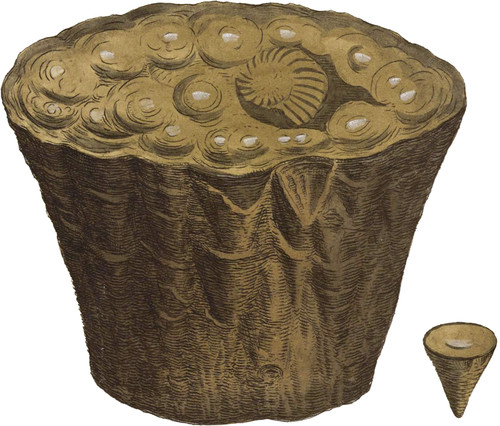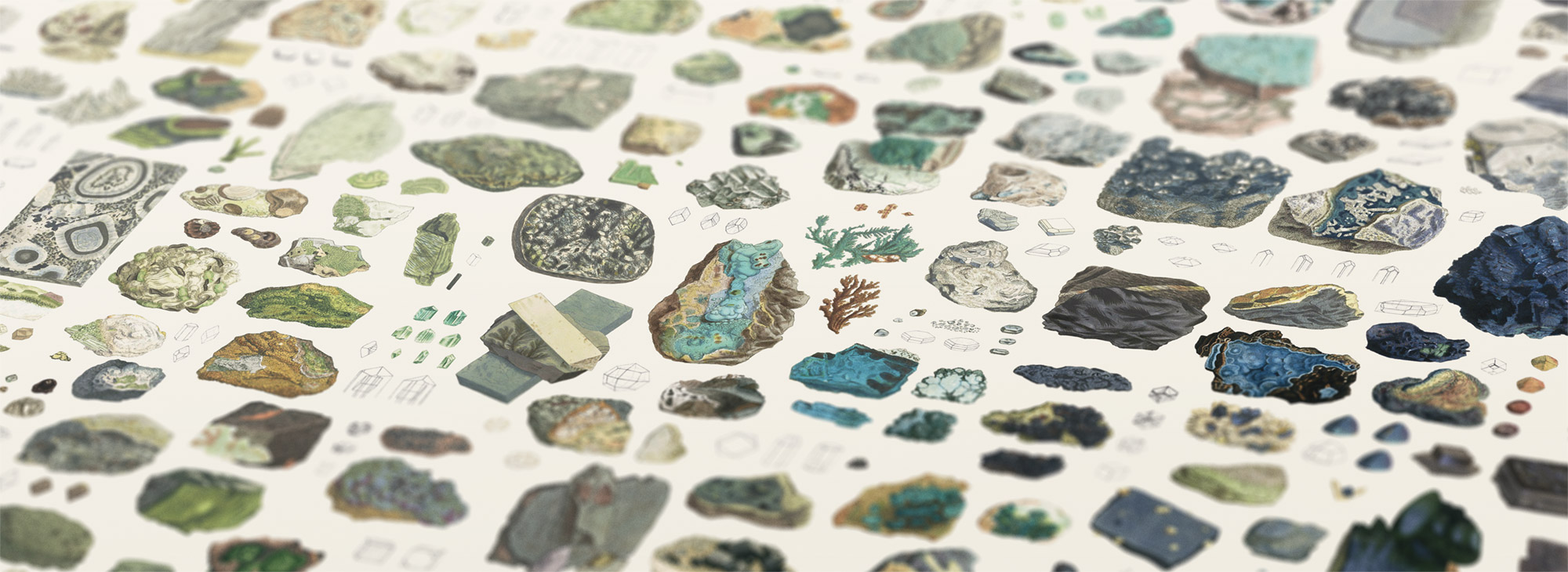 Enlarge
Enlarge
British Mineralogy
Argillaceous Marle
- Class 2. Earths.
- Order 2. Compound.
- Gen. 1. Argilla.
- Spec. 1. Marle.
- Div. 1. Imitative.
- Syn. Tophus turbinatus. Linn. Syst. Nat. ed. 13. v. 2. 190.
We so frequently find the figure of Corallines, or other organized substances, that we are often puzzled to account for them; some however are readily understood to be infiltrations taking place of them, and that before us has hitherto been considered by many in this light. The singular regularity of the specimen here figured has given rise to many conjectures. In giving my opinion I desire to discver the truth; and having made many comparisons, I agree with Linnæus, that it is rather a Stalactite formed under certain circumstances among other operations of nature, which may be continued to a great extent. Thus, Mr. Martyn observes that a very large space in Derbyshire is of this formation. It is finely undulated: in other respects the cones run into each other, something like a child’s horn gig—which will separate into a number of cones, more or less perfect, if placed by the fire. From the present specimen I separated some cones, by alternately wetting and drying it. We do not know how minutely they may be divided. The fracture is like other compact calcareous marles, that are not governed by the conical formation. We have had them from two or three friends in Derbyshire. The present specimen was given me by Mr. Baker, by favour of my friend the Rev. James Dalton, and comes from the alum-works at Boulby in Yorkshire belonging to the former gentleman, and was remarked for being in the form of a horse’s hoof, having settled upon a Cornu-Ammonis.
They are mostly of an argillaceous marle: but I have one from Cumberland, given me by Mr. Buchanan from Barton fell, which seems to be more of an Iron ore than any of my others. In most of the English specimens the cones are rather confusedly coalesced. In foreign ones, groups of cones joined together by their edges are apt to separate; whence Linnæus’s description. The present specimen figured contains so much pyrites dispersed through it, that it might be used as an alum ore.

